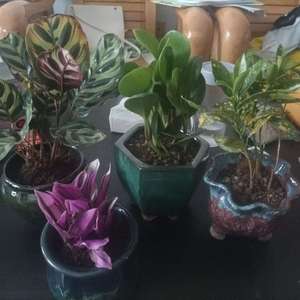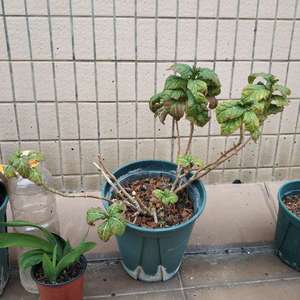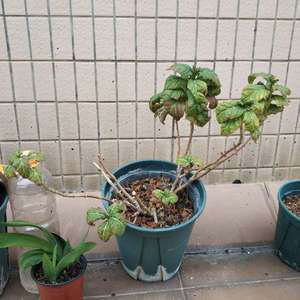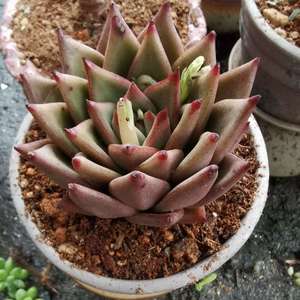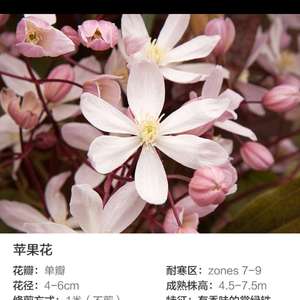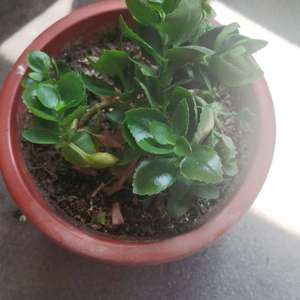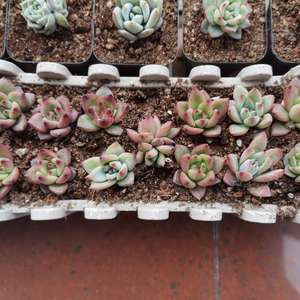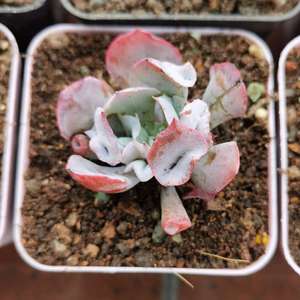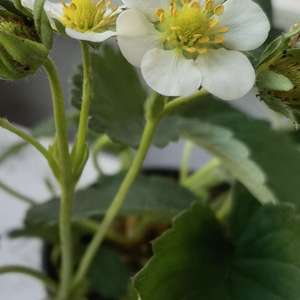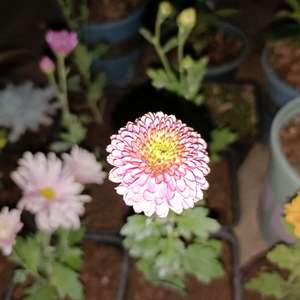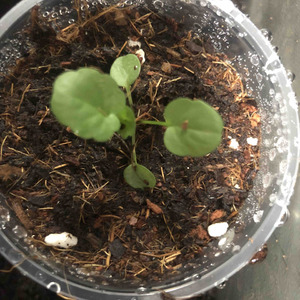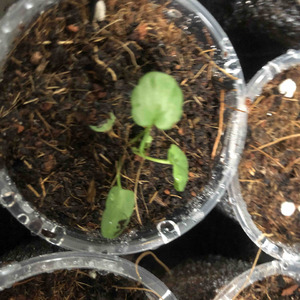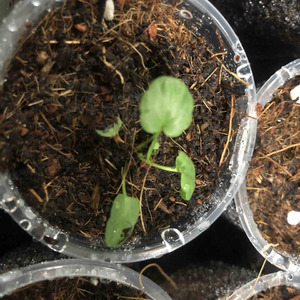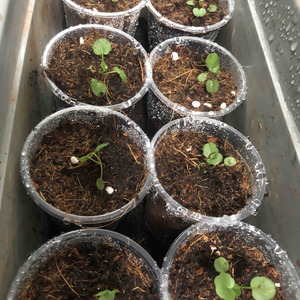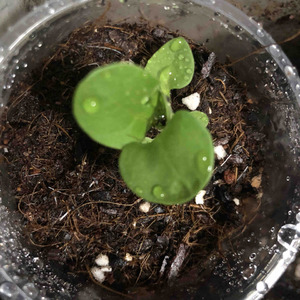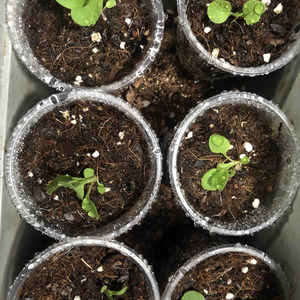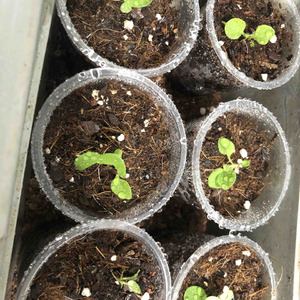文章
Miss Chen
2021年12月23日

Butterfly weed is a must-have plant for gardeners looking to coax the namesake winged insects into the garden. This clump-forming perennial grows from tuberous roots to a height of 1 to 2 feet and is characterized by glossy-green, lance-shaped leaves and clusters of bright orange-to-yellow blooms that are rich with nectar and pollen. A type of milkweed, butterfly weed is generally planted in late spring after the soil is workable. It is fairly slow to become established and may take as much as three years before it flowers. When it finally does flower, its clusters of bright orange-yellow flowers will display from late spring until late summer. Unlike other milkweeds, butterfly weed does not have caustic milky sap, but it does produce the characteristic seed pods that release silky-tailed seeds to disperse on the wind.
Butterfly weed is considered mildly toxic to humans and to animals.1 But because it has much lower levels of the toxic sap found in standard milkweed, butterfly weed is regarded as a safer plant in homes with children or pets.
Common Name Butterfly weed, butterfly milkweed, pleurisy root, orange milkweed
Botanical Name Asclepias tuberosa
Family Asclepiadaceae
Plant type Herbaceous perennial
Mature size 1–2 ft. tall, 12 to 18 in. wide
Sun exposure Full
Soil type Dry, well-drained
Soil pH Slightly acid to neutral (6.0 to 7.0)
Bloom time Summer
Flower color Orange, yellow
Hardiness zones 3–9 (USDA)
Native area North America (eastern and southeastern U.S.)
Toxicity Mildly toxic to animals and humans
Butterfly Weed Care
Beloved for its ability to attract a variety of helpful (and beautiful) insects to the garden, butterfly weed is an easy-to-nurture herbaceous perennial that can also be found growing as a native wildflower in a slew of untamed environments, such as meadows, prairies, and forest clearings. Typically grown from seeds you sow directly in the garden, butterfly weed does not require much tending to in order to thrive, prospering well in everything from clay soil to dry, rocky soil, and even in drought-like conditions.

Its seed pods will turn brown towards the end of the growing season (early autumn) and if left on the plant, they will burst and spread seeds throughout your garden to emerge as new volunteer plants the following spring. While the plant can take up to three years to fully mature and produce flowers, its blooms will gradually grow denser with each season that passes.
Like other types of milkweed, butterfly weed produces large seed pods that disperse small seeds with hairs that disperse on the wind. Thus, it can be an invasive plant that spreads every which way unless you break off the seed pods before they mature and split. Be careful when using this plant in gardens near wild prairie or meadow areas, as spreading is likely.
Light
If possible, choose a spot in your garden that boasts lots of bright sunlight daily, as this plant loves to soak up the rays. Full sun is definitely your best bet, but his hardy plant can tolerate a few hours of shade, too.
Soil
Butterfly weed can prosper in a variety of soil conditions and compositions, from clay to gravel, and it generally prefers a neutral to slightly acidic pH.
Water
During its first year of life (or until new plants start showing mature growth), you should maintain a moist soil environment for butterfly weed, giving it about 1 inch of water per week through combined rainfall and irrigation. Once the plant appears to be well-established, you can cut back to watering it only occasionally, as it now prefers dry soil. Mature plants can do well with just monthly watering in all but the driest climates.
Temperature and Humidity
Butterfly weed thrives in a variety of different temperature and humidity settings, growing well in zones 3 to 9. Generally, the plant emerges in late spring, hitting its peak bloom during the warmer summer months and drying on the stem throughout the autumn and winter. It handles high-humidity and arid climates equally well, provided it gets adequate soil moisture.
Fertilizer
Butterfly weed is a low-maintenance plant that does not require any additional fertilization—in fact, doing so can harm the plant, making it excessively leggy and reducing blooms.
Types of Butterfly Weed
There are a number of named cultivars of this plant. Most varieties, as well as the native species, are orange. But some popular varieties offer color variations:
'Hello Yellow' is a variety with bright yellow flowers.
'Gay Butterflies' has decidedly reddish flowers.
‘Western Gold Mix’has golden-orange flowers and is bred especially for the alkaline soils of the western U.S.
Pruning Butterfly Weed
Though butterfly weed does not need much pruning throughout the year, it can be cut back to the ground ahead of the winter season. In late autumn, you'll notice the leaves on the butterfly weed are beginning to yellow and the stems are drying out and turning brown. This is a sign that the plant is entering dormancy for the season—at this point, you can take a clean set of pruning shears and cut the plant to the ground, where it will stay until it reemerges in spring.
How to Propagate Butterfly Weed
Butterfly weed is very easy to propagate from seed, but because seeds can take two to three years to mature into flowering plants, many gardeners choose to propagate from root cuttings. Here's how to do it:
In fall after flowering is complete, use a trowel or shovel, dig up the plant's long taproot,
Using a sharp knife, cut the taproot into 2-inch-long sections.
Plant the pieces in the desired location in a vertical orientation, with the tops just barely covered with soil. These plants do not like to be moved, so make sure to plant the pieces with this in mind.
How to Grow Butterfly Weed From Seed
Typically, the easiest and most successful way to add butterfly weed to your garden is to grow it from seed. Plant fresh seeds in fall for growth the following spring, or allow any established butterfly weeds already in your garden to do the work for you.
Beginning in late summer or early fall, the plants should start to develop seed pods at the base of the pollinated blooms. If left on the stem, the pods will eventually burst and the seeds inside will be blown throughout your garden, allowing them to establish themselves in the soil in time for the following year. If you'd rather have more control over the eventual location of any new butterfly weed plants, you can remove the seed pods from the plant before they burst open and simply plant new seeds by hand instead.
Overwintering
Overwintering butterfly weed is a simple matter of cutting off the plant stem near ground level as soon as the plant succumbs to cold temperatures in the fall or early winter. There is no harm to leaving the plant stalks in place, though this encourages rampant self-seeding, which is usually not desired. Don't mulch over the root crowns, as this can encourage rot.
Common Pests and Plant Diseases
In most circumstances, butterfly weed is largely trouble-free, but it can be susceptible to root rot if it is planted in dense soil that gets too much moisture. It can also be susceptible to fungal diseases such as rust and other leaf spots, though these are usually merely cosmetic and not fatal.
The plant can be susceptible to aphid damage, which usually is controlled by lady beetles and other predator insects unless the infestation is severe, at which point you can spray with an insecticidal soap or pesticide.
How to Get Butterfly Weed to Bloom
In general, butterfly weed is not a difficult plant to cultivate and should bloom freely on its own once it has reached maturity (which can take up to three years). That being said, if you're struggling to get your butterfly weed to bloom, there could be a few factors at play.
It's important to get your watering cadence right for the plant. It should be watered regularly until new growth starts to appear (this includes leaves and stems, not just blooms), at which point you can decrease the frequency with which you water. Additionally, butterfly weed plants should not be fertilized. While fertilizer may work to make other plants bloom, it can actually harm butterfly weed and discourage blooming.
Common Problems With Butterfly Weed
Other than the root rot that can appear in dense, wet soils, there are only a couple of common problems with butterfly weed.
Self-Seeding
The most common issue with butterfly weed is the rampant self-seeding that happens if the seed pods aren't removed before they burst and scatter their seeds. This can be prevented by removing the seed pods before they dry and burst open. The volunteer plants that appear due to self-seeding should be removed before they establish long tap roots.
Rabbit Damage
Butterfly weed is very attractive to feeding rabbits. Rodent repellant granules or sprays can provide some prevention, but metal fencing around the plants is the best solution.
Butterfly weed is considered mildly toxic to humans and to animals.1 But because it has much lower levels of the toxic sap found in standard milkweed, butterfly weed is regarded as a safer plant in homes with children or pets.
Common Name Butterfly weed, butterfly milkweed, pleurisy root, orange milkweed
Botanical Name Asclepias tuberosa
Family Asclepiadaceae
Plant type Herbaceous perennial
Mature size 1–2 ft. tall, 12 to 18 in. wide
Sun exposure Full
Soil type Dry, well-drained
Soil pH Slightly acid to neutral (6.0 to 7.0)
Bloom time Summer
Flower color Orange, yellow
Hardiness zones 3–9 (USDA)
Native area North America (eastern and southeastern U.S.)
Toxicity Mildly toxic to animals and humans
Butterfly Weed Care
Beloved for its ability to attract a variety of helpful (and beautiful) insects to the garden, butterfly weed is an easy-to-nurture herbaceous perennial that can also be found growing as a native wildflower in a slew of untamed environments, such as meadows, prairies, and forest clearings. Typically grown from seeds you sow directly in the garden, butterfly weed does not require much tending to in order to thrive, prospering well in everything from clay soil to dry, rocky soil, and even in drought-like conditions.

Its seed pods will turn brown towards the end of the growing season (early autumn) and if left on the plant, they will burst and spread seeds throughout your garden to emerge as new volunteer plants the following spring. While the plant can take up to three years to fully mature and produce flowers, its blooms will gradually grow denser with each season that passes.
Like other types of milkweed, butterfly weed produces large seed pods that disperse small seeds with hairs that disperse on the wind. Thus, it can be an invasive plant that spreads every which way unless you break off the seed pods before they mature and split. Be careful when using this plant in gardens near wild prairie or meadow areas, as spreading is likely.
Light
If possible, choose a spot in your garden that boasts lots of bright sunlight daily, as this plant loves to soak up the rays. Full sun is definitely your best bet, but his hardy plant can tolerate a few hours of shade, too.
Soil
Butterfly weed can prosper in a variety of soil conditions and compositions, from clay to gravel, and it generally prefers a neutral to slightly acidic pH.
Water
During its first year of life (or until new plants start showing mature growth), you should maintain a moist soil environment for butterfly weed, giving it about 1 inch of water per week through combined rainfall and irrigation. Once the plant appears to be well-established, you can cut back to watering it only occasionally, as it now prefers dry soil. Mature plants can do well with just monthly watering in all but the driest climates.
Temperature and Humidity
Butterfly weed thrives in a variety of different temperature and humidity settings, growing well in zones 3 to 9. Generally, the plant emerges in late spring, hitting its peak bloom during the warmer summer months and drying on the stem throughout the autumn and winter. It handles high-humidity and arid climates equally well, provided it gets adequate soil moisture.
Fertilizer
Butterfly weed is a low-maintenance plant that does not require any additional fertilization—in fact, doing so can harm the plant, making it excessively leggy and reducing blooms.
Types of Butterfly Weed
There are a number of named cultivars of this plant. Most varieties, as well as the native species, are orange. But some popular varieties offer color variations:
'Hello Yellow' is a variety with bright yellow flowers.
'Gay Butterflies' has decidedly reddish flowers.
‘Western Gold Mix’has golden-orange flowers and is bred especially for the alkaline soils of the western U.S.
Pruning Butterfly Weed
Though butterfly weed does not need much pruning throughout the year, it can be cut back to the ground ahead of the winter season. In late autumn, you'll notice the leaves on the butterfly weed are beginning to yellow and the stems are drying out and turning brown. This is a sign that the plant is entering dormancy for the season—at this point, you can take a clean set of pruning shears and cut the plant to the ground, where it will stay until it reemerges in spring.
How to Propagate Butterfly Weed
Butterfly weed is very easy to propagate from seed, but because seeds can take two to three years to mature into flowering plants, many gardeners choose to propagate from root cuttings. Here's how to do it:
In fall after flowering is complete, use a trowel or shovel, dig up the plant's long taproot,
Using a sharp knife, cut the taproot into 2-inch-long sections.
Plant the pieces in the desired location in a vertical orientation, with the tops just barely covered with soil. These plants do not like to be moved, so make sure to plant the pieces with this in mind.
How to Grow Butterfly Weed From Seed
Typically, the easiest and most successful way to add butterfly weed to your garden is to grow it from seed. Plant fresh seeds in fall for growth the following spring, or allow any established butterfly weeds already in your garden to do the work for you.
Beginning in late summer or early fall, the plants should start to develop seed pods at the base of the pollinated blooms. If left on the stem, the pods will eventually burst and the seeds inside will be blown throughout your garden, allowing them to establish themselves in the soil in time for the following year. If you'd rather have more control over the eventual location of any new butterfly weed plants, you can remove the seed pods from the plant before they burst open and simply plant new seeds by hand instead.
Overwintering
Overwintering butterfly weed is a simple matter of cutting off the plant stem near ground level as soon as the plant succumbs to cold temperatures in the fall or early winter. There is no harm to leaving the plant stalks in place, though this encourages rampant self-seeding, which is usually not desired. Don't mulch over the root crowns, as this can encourage rot.
Common Pests and Plant Diseases
In most circumstances, butterfly weed is largely trouble-free, but it can be susceptible to root rot if it is planted in dense soil that gets too much moisture. It can also be susceptible to fungal diseases such as rust and other leaf spots, though these are usually merely cosmetic and not fatal.
The plant can be susceptible to aphid damage, which usually is controlled by lady beetles and other predator insects unless the infestation is severe, at which point you can spray with an insecticidal soap or pesticide.
How to Get Butterfly Weed to Bloom
In general, butterfly weed is not a difficult plant to cultivate and should bloom freely on its own once it has reached maturity (which can take up to three years). That being said, if you're struggling to get your butterfly weed to bloom, there could be a few factors at play.
It's important to get your watering cadence right for the plant. It should be watered regularly until new growth starts to appear (this includes leaves and stems, not just blooms), at which point you can decrease the frequency with which you water. Additionally, butterfly weed plants should not be fertilized. While fertilizer may work to make other plants bloom, it can actually harm butterfly weed and discourage blooming.
Common Problems With Butterfly Weed
Other than the root rot that can appear in dense, wet soils, there are only a couple of common problems with butterfly weed.
Self-Seeding
The most common issue with butterfly weed is the rampant self-seeding that happens if the seed pods aren't removed before they burst and scatter their seeds. This can be prevented by removing the seed pods before they dry and burst open. The volunteer plants that appear due to self-seeding should be removed before they establish long tap roots.
Rabbit Damage
Butterfly weed is very attractive to feeding rabbits. Rodent repellant granules or sprays can provide some prevention, but metal fencing around the plants is the best solution.
0
0
文章
Miss Chen
2021年10月14日

The bigleaf magnolia (Magnolia macrophylla) can be a stunning addition to the landscape. The oblong to obovate leaves on this magnolia tree can measure up to 3 feet long and 1 foot wide, hence the species name of macrophylla, which is Latin for "large leaves." The leaves are medium green on top and a silvery color on their undersides. The tree bears fragrant white flowers that are equally impressive and massive, with a span of roughly 8 to 12 inches. Even the elongated red fruits that follow the flowers offer visual interest. The fruits also are popular with birds and other wildlife.
The tree has a moderate growth rate, gaining around a foot per year and forming a pyramidal shape. It can be planted in the fall or early spring.
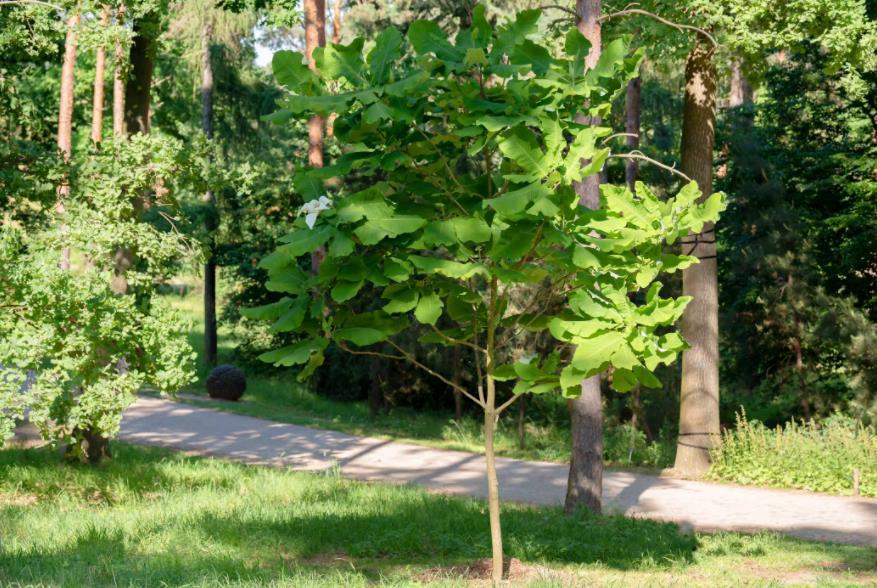
Botanical Name Magnolia macrophylla
Common Names Bigleaf magnolia, large-leaved cucumber tree, great-leaved macrophylla, umbrella tree
Plant Type Tree
Mature Size 30–40 ft. tall and wide
Sun Exposure Full, partial
Soil Type Loamy, moist, well-drained
Soil pH Acidic, neutral
Bloom Time Late spring to early summer
Flower Color Creamy white with purple petal bases
Hardiness Zones 5–8 (USDA)
Native Area Caribbean, North America, Central America
Bigleaf Magnolia Care
Bigleaf magnolias are easy to care for when grown in optimal conditions. They do not suffer from any serious pest or disease issues, nor do they require regular pruning to maintain their shape. If you do need to prune to remove a misshapen branch, try to do so in the late winter or early spring. This will prevent the sap from bleeding. Remove any dead, damaged, or diseased branches as they arise.
A drawback of bigleaf magnolias is it can take a decade or longer for them to begin to produce blooms. Also, because the leaves are so large, raking them can be quite a chore in the fall. Furthermore, they are fairly fussy about the soil in which they grow. They do not like very dry or very wet ground. And they are intolerant of pollution, meaning they do not make good street trees.
Light
Bigleaf magnolia trees need a site that has full sun to part shade. Two to five hours of direct sunlight each day is typically sufficient.
Soil
These trees prefer conditions that mimic their native woodland habitat. Loamy soil that is high in organic matter and drains well is ideal. And a slightly acidic to neutral soil pH is best.
Water
Bigleaf magnolias don't do well in soggy or bone dry soil. Always allow the soil to dry out somewhat between waterings, but never allow it to stay dry for too long. Water when the top inch of soil is dry to the touch. Bigleaf magnolias grown in exceptionally well-draining soil will need more frequent watering than trees grown in slow-draining soil types.
Temperature and Humidity
The bigleaf magnolia tolerates the temperature highs and lows of its growing zones well. Humidity also typically is not an issue as long as the tree's moisture requirements are met. A layer of mulch around the tree can help to keep the roots cool and retain soil moisture. One specific climate requirement of bigleaf magnolia trees is a location that does not experience strong winds. Because the leaves of this tree are so large, they are easily damaged by wind gusts.
Fertilizer
When grown in organically rich soil, bigleaf magnolias often don't need supplemental fertilizer. Signs that fertilizer is necessary include weak new growth in the spring and significant dieback. Use a slow-release fertilizer with a balanced formulation, and apply it during late spring or early summer
Bigleaf Magnolia Varieties
The bigleaf magnolia has been divided into three subspecies that some people treat as separate species. They are:
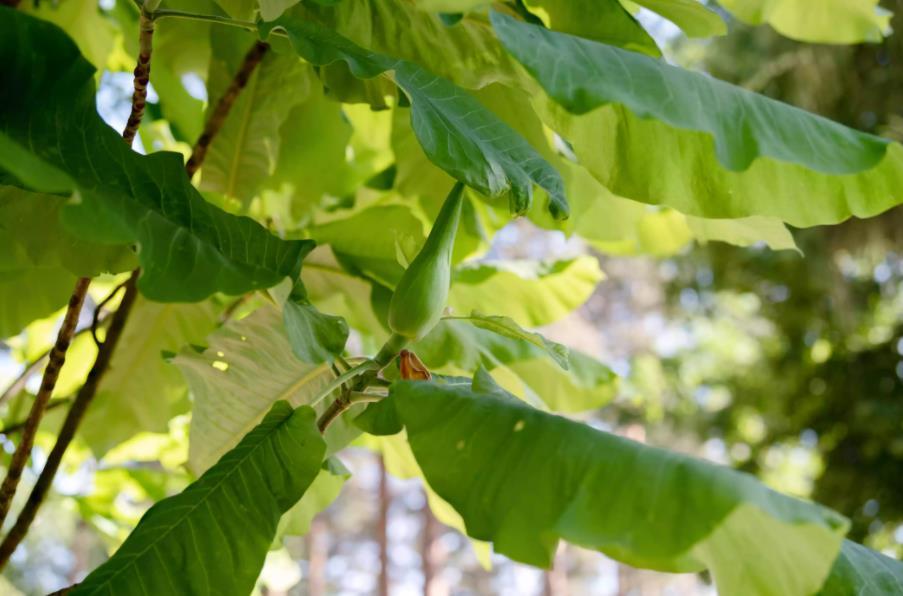
Magnolia macrophylla subsp. macrophylla: Known also as bigleaf magnolia, this tree sports leaves that can stretch from 20 to 36 inches long. And the tree itself can grow more than 60 feet tall.
Magnolia macrophylla subsp. ashei (also Magnolia ashei): Known as the Ashe magnolia, this tree can grow up to 40 feet high. And its leaves stretch around 10 to 24 inches long.
Magnolia macrophylla subsp. dealbata (also Magnolia dealbata): This tree has two common names: the Mexican bigleaf magnolia and the cloud forest magnolia. It can grow more than 60 feet high with leaves around 1 to 2 feet long. Its fruits also are fairly large at around 3 to 6 inches long.
Propagating Bigleaf Magnolia
Most growers prefer buying bigleaf magnolia trees from nurseries, but the trees can also be grown from seed. Collect ripe, fallen fruit from the ground, and remove the flesh, leaving only the seeds. Clean seeds can be stored in an airtight container in the refrigerator. Sow the seeds in the fall, but be aware that bigleaf magnolia seeds are known for having low seed viability. If you're not keen on trying your luck with the seeds, bigleaf magnolias can also be propagated via rooting softwood cuttings in the summer.
The tree has a moderate growth rate, gaining around a foot per year and forming a pyramidal shape. It can be planted in the fall or early spring.

Botanical Name Magnolia macrophylla
Common Names Bigleaf magnolia, large-leaved cucumber tree, great-leaved macrophylla, umbrella tree
Plant Type Tree
Mature Size 30–40 ft. tall and wide
Sun Exposure Full, partial
Soil Type Loamy, moist, well-drained
Soil pH Acidic, neutral
Bloom Time Late spring to early summer
Flower Color Creamy white with purple petal bases
Hardiness Zones 5–8 (USDA)
Native Area Caribbean, North America, Central America
Bigleaf Magnolia Care
Bigleaf magnolias are easy to care for when grown in optimal conditions. They do not suffer from any serious pest or disease issues, nor do they require regular pruning to maintain their shape. If you do need to prune to remove a misshapen branch, try to do so in the late winter or early spring. This will prevent the sap from bleeding. Remove any dead, damaged, or diseased branches as they arise.
A drawback of bigleaf magnolias is it can take a decade or longer for them to begin to produce blooms. Also, because the leaves are so large, raking them can be quite a chore in the fall. Furthermore, they are fairly fussy about the soil in which they grow. They do not like very dry or very wet ground. And they are intolerant of pollution, meaning they do not make good street trees.
Light
Bigleaf magnolia trees need a site that has full sun to part shade. Two to five hours of direct sunlight each day is typically sufficient.
Soil
These trees prefer conditions that mimic their native woodland habitat. Loamy soil that is high in organic matter and drains well is ideal. And a slightly acidic to neutral soil pH is best.
Water
Bigleaf magnolias don't do well in soggy or bone dry soil. Always allow the soil to dry out somewhat between waterings, but never allow it to stay dry for too long. Water when the top inch of soil is dry to the touch. Bigleaf magnolias grown in exceptionally well-draining soil will need more frequent watering than trees grown in slow-draining soil types.
Temperature and Humidity
The bigleaf magnolia tolerates the temperature highs and lows of its growing zones well. Humidity also typically is not an issue as long as the tree's moisture requirements are met. A layer of mulch around the tree can help to keep the roots cool and retain soil moisture. One specific climate requirement of bigleaf magnolia trees is a location that does not experience strong winds. Because the leaves of this tree are so large, they are easily damaged by wind gusts.
Fertilizer
When grown in organically rich soil, bigleaf magnolias often don't need supplemental fertilizer. Signs that fertilizer is necessary include weak new growth in the spring and significant dieback. Use a slow-release fertilizer with a balanced formulation, and apply it during late spring or early summer
Bigleaf Magnolia Varieties
The bigleaf magnolia has been divided into three subspecies that some people treat as separate species. They are:

Magnolia macrophylla subsp. macrophylla: Known also as bigleaf magnolia, this tree sports leaves that can stretch from 20 to 36 inches long. And the tree itself can grow more than 60 feet tall.
Magnolia macrophylla subsp. ashei (also Magnolia ashei): Known as the Ashe magnolia, this tree can grow up to 40 feet high. And its leaves stretch around 10 to 24 inches long.
Magnolia macrophylla subsp. dealbata (also Magnolia dealbata): This tree has two common names: the Mexican bigleaf magnolia and the cloud forest magnolia. It can grow more than 60 feet high with leaves around 1 to 2 feet long. Its fruits also are fairly large at around 3 to 6 inches long.
Propagating Bigleaf Magnolia
Most growers prefer buying bigleaf magnolia trees from nurseries, but the trees can also be grown from seed. Collect ripe, fallen fruit from the ground, and remove the flesh, leaving only the seeds. Clean seeds can be stored in an airtight container in the refrigerator. Sow the seeds in the fall, but be aware that bigleaf magnolia seeds are known for having low seed viability. If you're not keen on trying your luck with the seeds, bigleaf magnolias can also be propagated via rooting softwood cuttings in the summer.
0
0
文章
Miss Chen
2021年10月11日

Belladonna (Atropa bella-donna) is extremely toxic to toxic to humans,1 cats, dogs, and horses.2 It’s a plant that by no means should you ever plant it in your yard. Belladonna escaped its native areas in Eurasia and has naturalized in other parts of the world. It can be anywhere, almost. It is important to be able to identify belladonna and remove it promptly before it can cause any harm.
The botanical name of the genus already gives away how deadly the plant is. Atropa was named in the mid-1700s after Atropos, the Greek goddess who, as one of the three goddesses of fate and destiny, holds the shears to cut the thread of life. The common name and the species name, belladonna, comes from the Italian word for beautiful woman, “bella donna”. Ladies at the Venetian court used eye drops made of belladonna to dilate their pupils, viewed as a sign of special beauty at the time.
FEATURED VIDEO
How to Remove Coffee Stains From Carpet
Which Parts of Belladonna Are Toxic?
All parts of belladonna—leaves, flowers, fruits, and roots—are highly toxic.3
Belladonna is also highly toxic to dogs, cats, horses, and other domesticated animals. It is not toxic to birds and wildlife.
When honeybees feed on belladonna, the honey they produce can contain significant amounts of atropine, which also makes the honey toxic3—another compelling reason to remove belladonna promptly wherever it pops up.

How to Identify Belladonna
Belladonna is a tall, bushy, upright, perennial of the nightshade family. It grows three to four feet high and wide. As a perennial, it comes back every year.
The dark green leaves are oval and unevenly sized, ranging from three to ten inches in length. The leaves on the lower part of the plant are solitary, on the upper part of the plant, they grow in pairs.
Belladonna blooms for an extended period of time, from June through early September. The flowers are dull purple or lavender with a green tinge and distinctly bell-shaped. The flowers are located in the leaf axils, the angle between the leaf and the upper part of the stem. They are distinctly bell-shaped and have a mild floral scent.
The fruit, which ripen between late August and September, are black and shiny like a cherry. The berries are not evenly sized and can reach about three quarters of an inch in size. Once they ripen, the berries dry up quickly.
Due to their slight resemblance with wild edible berries, such as blueberries and blackberries, the purplish-black, sweet-tasting fruit of belladonna pose a particular risk of being ingested.
Where Does Belladonna Grow?
Belladonna is native to England through central and southern Europe, North Africa to Iran. In the United States, belladonna has been found in several states, including New York, Michigan, California, Oregon, and Washington. It often grows in wasteland and areas with disturbed soil such as dumps and quarries, and along roadsides.
How Does Belladonna Spread?
Belladonna spreads rapidly like a weed. The plant dies back during the winter and regrows in the spring from its thick, fleshy roots.
Birds that eat the seeds without any ill effects spread the plant to other locations in their droppings.
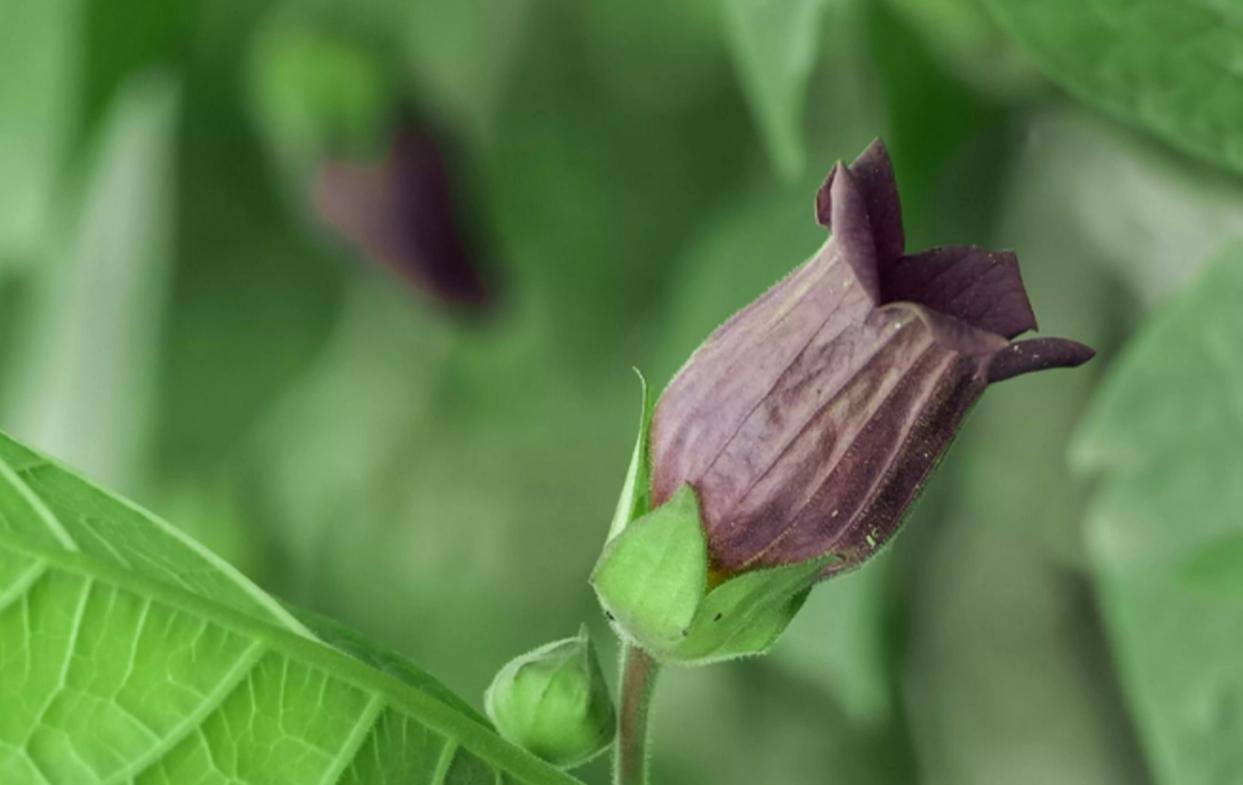
How to Get Rid of Belladonna from Your Yard
If you have positively identified belladonna in your yard, take all the necessary precautions to avoid skin contact. Wear long sleeves, long pants, boots, and gloves. If the plant is tall and there is the slightest risk that your face can get in contact with the plant, also wear goggles or a full-face respirator.
Dig out the plant with all its roots. Be thorough because belladonna regrows from any roots left in the soil. Safely dispose of the entire plant including its roots in the trash. Don’t forget to disinfect the tools you have been using for removing the plant—shovel, pruners etc. with bleach water (1 cup bleach per 1 gallon water). When cleaning the tools, wear waterproof gloves. Wash your clothes immediately and separately from other clothing.
If belladonna starts to regrow from residual roots, the most efficient chemical to use is a non-selective herbicide such as glyphosate. Make sure to apply the herbicide when the shoots are still very small to minimize the use of herbicide and hit the plant before it can spread again.
The botanical name of the genus already gives away how deadly the plant is. Atropa was named in the mid-1700s after Atropos, the Greek goddess who, as one of the three goddesses of fate and destiny, holds the shears to cut the thread of life. The common name and the species name, belladonna, comes from the Italian word for beautiful woman, “bella donna”. Ladies at the Venetian court used eye drops made of belladonna to dilate their pupils, viewed as a sign of special beauty at the time.
FEATURED VIDEO
How to Remove Coffee Stains From Carpet
Which Parts of Belladonna Are Toxic?
All parts of belladonna—leaves, flowers, fruits, and roots—are highly toxic.3
Belladonna is also highly toxic to dogs, cats, horses, and other domesticated animals. It is not toxic to birds and wildlife.
When honeybees feed on belladonna, the honey they produce can contain significant amounts of atropine, which also makes the honey toxic3—another compelling reason to remove belladonna promptly wherever it pops up.

How to Identify Belladonna
Belladonna is a tall, bushy, upright, perennial of the nightshade family. It grows three to four feet high and wide. As a perennial, it comes back every year.
The dark green leaves are oval and unevenly sized, ranging from three to ten inches in length. The leaves on the lower part of the plant are solitary, on the upper part of the plant, they grow in pairs.
Belladonna blooms for an extended period of time, from June through early September. The flowers are dull purple or lavender with a green tinge and distinctly bell-shaped. The flowers are located in the leaf axils, the angle between the leaf and the upper part of the stem. They are distinctly bell-shaped and have a mild floral scent.
The fruit, which ripen between late August and September, are black and shiny like a cherry. The berries are not evenly sized and can reach about three quarters of an inch in size. Once they ripen, the berries dry up quickly.
Due to their slight resemblance with wild edible berries, such as blueberries and blackberries, the purplish-black, sweet-tasting fruit of belladonna pose a particular risk of being ingested.
Where Does Belladonna Grow?
Belladonna is native to England through central and southern Europe, North Africa to Iran. In the United States, belladonna has been found in several states, including New York, Michigan, California, Oregon, and Washington. It often grows in wasteland and areas with disturbed soil such as dumps and quarries, and along roadsides.
How Does Belladonna Spread?
Belladonna spreads rapidly like a weed. The plant dies back during the winter and regrows in the spring from its thick, fleshy roots.
Birds that eat the seeds without any ill effects spread the plant to other locations in their droppings.

How to Get Rid of Belladonna from Your Yard
If you have positively identified belladonna in your yard, take all the necessary precautions to avoid skin contact. Wear long sleeves, long pants, boots, and gloves. If the plant is tall and there is the slightest risk that your face can get in contact with the plant, also wear goggles or a full-face respirator.
Dig out the plant with all its roots. Be thorough because belladonna regrows from any roots left in the soil. Safely dispose of the entire plant including its roots in the trash. Don’t forget to disinfect the tools you have been using for removing the plant—shovel, pruners etc. with bleach water (1 cup bleach per 1 gallon water). When cleaning the tools, wear waterproof gloves. Wash your clothes immediately and separately from other clothing.
If belladonna starts to regrow from residual roots, the most efficient chemical to use is a non-selective herbicide such as glyphosate. Make sure to apply the herbicide when the shoots are still very small to minimize the use of herbicide and hit the plant before it can spread again.
0
0





